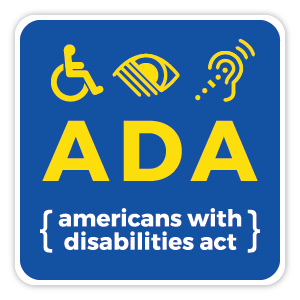Organizations around the world are scrambling to bring their websites into ADA compliance. For a website to be ADA compliant, it needs to be accessible to users of all abilities and disabilities.
The law that primarily governs accessibility is The Americans with Disabilities Act (ADA). Even though it doesn’t mention websites, Title III of the ADA has been been interpreted by US courts to apply to websites.
Lawsuits have since been on the rise, targeting websites not compliant with the ADA. Common types of organizations hit with lawsuits include organizations that benefit the public, private employers with 15 or more employees and local, state or government agencies.
Simply put, these lawsuits occur when websites are not properly coded to accommodate those with disabilities. While the legal actions being taken lit an immediate fire underneath web developers and designers, it’s also brought to light the need for better user-experience design and development for people who may have had trouble, or were unable to use many websites at all before.
So, what makes a website accessible?
U.S. courts and the Department of Justice (DOJ) have frequently referenced the Web Content Accessibility Guidelines (WCAG) 2.0 Level AA success criteria as a standard to gauge whether websites are accessible. The WCAG 2.0 AA success criteria are comprised of 38 requirements, individually referred to as success criterion.
In short, a website is accessible when people with disabilities can enjoy the full use of it; they can access content, easily navigate the site and engage with different elements successfully.
How do I ensure my website is accessible?
While organizations cannot always be 100% compliant, there are steps that you can take to ensure your site is accessible to those with different disabilities.
- Review the Website Content Accessibility Guidelines Checklist (WCAG 2.0). These guidelines (Level AA) have been referenced by the DOJ as the standard to gauge website compliance.
- Conduct an audit of your site using programs like WAVE or Lighthouse. Google Chrome’s WAVE extension is a great, free tool to look for major accessibility issues.
- Make sure your images have descriptive “alt” tags. Alt tags are used by screen readers, players, and voiceovers to describe elements on a website to users with vision-specific impairments.
- Make sure all video-only and audio-only files have a text transcript. Videos should have closed captioning.
- Review your website’s styles and elements, such as headings, buttons and links. Keep in mind font size, color contrast and complex images. Complex images should include a text equivalent (alt text).
- Utilize web writing best practices when developing content. Keeping your website content simple and conversational can help users scan content easier. Using headings can will break out content into smaller sections for readability.
- Audit your website’s code. Have a developer review the code and CSS to ensure best practices are being utilized and clean up outdated code.
And remember, making your site ADA compliant is not a one-time fix. It’s part of your website’s ongoing maintenance.
